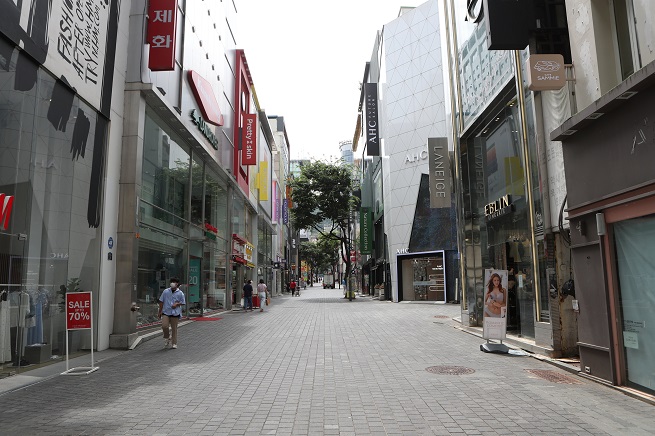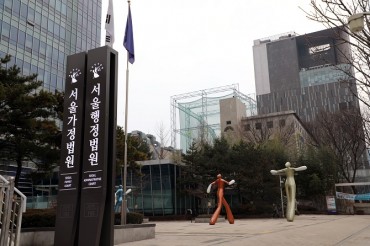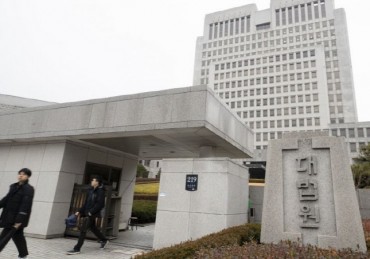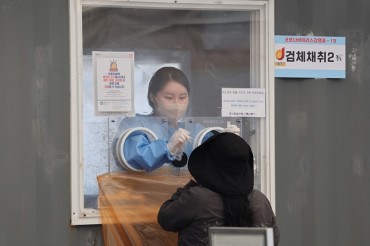
The Myeongdong shopping street in central Seoul is empty on July 14, 2021, amid the toughest social distancing scheme imposed in the capital due to spiking new COVID-19 cases. (Yonhap)
SEOUL, July 16 (Korea Bizwire) — The coronavirus pandemic is prompting consumers to stick to restaurants they’re used to frequenting, rather than looking for new places to eat.
Local fintech firm Korea Credit Data studied credit card data collected from 700,000 vendors across the country to find that the use of credit cards at newly visiting shops dropped by 27.7 percent for the first quarter of this year compared to the same period in 2019.
In contrast, the use of credit cards at shops with more than one visit in 12 months fell by a slight 8.7 percent.
The trend is seen as a result of consumers having fewer opportunities to visit new restaurants or shops due to the dwindling number of meetings and gatherings following the onset of the pandemic.
Since consumers prefer to avoid meeting strangers at an unfamiliar place, they are sticking to vendors they’re familiar with.
A study on Shinhan Card user’s transaction data, conducted by Shinhan Card’s big data center last November, showed that the average distance fared by members for consumption following the coronavirus outbreak in April last year was 140.7 kilometers, which was 25 percent lower than the year before (186.8 kilometers).
With more consumers sticking to regular vendors, commercial districts without residential populations have seen sales plunge, while smaller shops near residential areas have sustained a minor drop in sales.
Comparing the credit and debit card use at restaurants and convenience stores in the fourth quarter of last year with the same period in 2019 showed that major commercial districts, such as Hongdae and Myeongdong, have seen sales drop significantly by almost 50 percent.
In contrast, convenience stores in Sanggye-dong, Nowon District, and Haebangchon, Yongsan District, two major residential areas, have sustained only minor sales drops of 8.6 percent and 0.8 percent respectively.
H. M. Kang (hmkang@koreabizwire.com)






